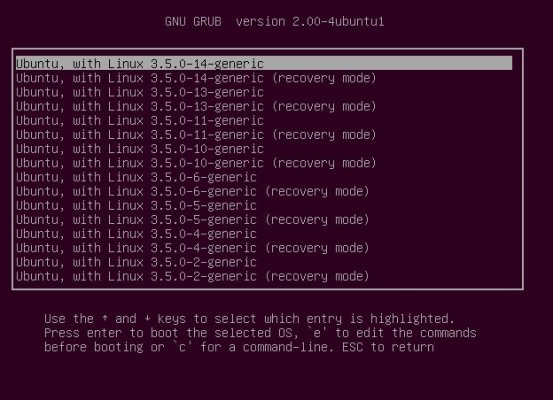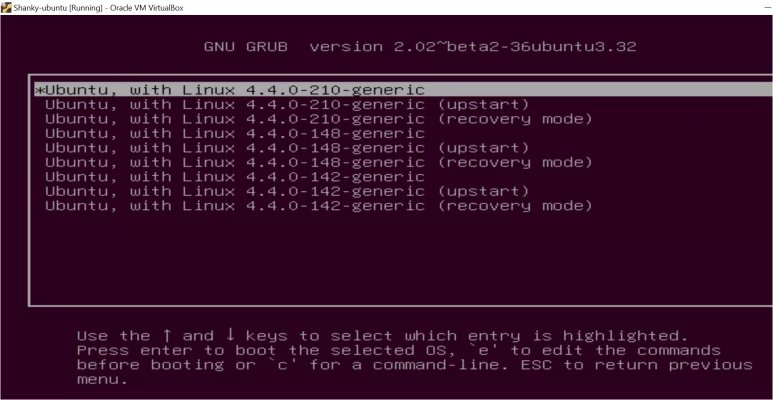-
United Kingdom+44 (20) 4577-20-00
-
USA+1 (929) 431-18-18
-
Israel+972 (55) 507-70-81
-
Brazil+55 (61) 3772-18-88
-
Canada+1 (416) 850-13-33
-
Czech Republic+420 (736) 353-668
-
Estonia+372 (53) 683-380
-
Greece+30 (800) 000-02-04
-
Ireland+353 (1) 699-43-88
-
Iceland+354 (53) 952-99
-
Lithuania+370 (700) 660-08
-
Netherlands+31 (970) 1027-77-87
-
Portugal+351 (800) 180-09-04
-
Romania+40 (376) 300-641
-
Sweden+46 (79) 008-11-99
-
Slovakia+421 (2) 333-004-23
-
Switzerland+41 (22) 508-77-76
-
Moldova+373 (699) 33-1-22
 English
English
What is GRUB in Linux
- Main
- Knowledge base
- What is GRUB in Linux
GRUB (GNU GRand Unified Bootloader) is an operating system bootloader program in Linux. It provides the user with the ability to select an operating system or Linux kernel when booting the computer. GRUB works earlier in the boot process, even before the operating system itself starts.
More about grub
GRUB provides the user with an interactive menu to select the desired operating system or Linux kernel to boot. It can detect other installed operating systems on the computer and add them to the boot menu. It also allows the user to change operating system boot parameters, such as passing kernel parameters, booting in safe mode, or changing the graphic resolution of the screen.
A special feature of GRUB is its configuration file, which specifies boot settings including Linux kernels, boot parameters, and advanced settings. The GRUB configuration file is usually located in the /boot/grub directory. GRUB actually acts as the standard boot loader for most Linux distributions and plays an important role in successfully booting the operating system on a computer.
Features of grub in linux
GRUB (GNU GRand Unified Bootloader) in Linux has several features:
- Configuration flexibility: allows the user to customize the boot process, select operating systems or Linux kernels to boot, change boot parameters and manage various system settings.
- Multilingual support: supports different languages and allows the interactive boot menu to be displayed in the desired language, which is convenient for users from all over the world.
- Operating System Detection and Addition: automatically detects installed operating systems on your computer and adds them to the boot menu. This makes it easy to select the right system each time you boot.
- Support for different file systems: able to work with different file systems such as
ext4, NTFS, Btrfsand others. This allows you to boot operating systems stored on different partitions and file systems. - Password protection support: allows you to set a password to access the interactive boot menu or protect boot settings from unauthorized changes.
- Advanced debugging features: provides additional tools for debugging and diagnosing boot problems, such as a one-line command interface mode and the ability to change boot parameters manually.
GRUB is one of the most popular boot loaders in Linux and is widely used in various distributions due to its flexibility and reliability.
What is grub recovery?
GRUB recovery in Linux means restoring the boot loader after it has been damaged or deleted. GRUB recovery involves restoring one or more files necessary for its operation, such as configuration files, modules, and the boot loader itself. This allows the system to boot correctly again, allowing access to installed operating systems.
When is recovery necessary?
GRUB recovery can be performed using various tools and methods, depending on the Linux distribution and GRUB version. For example, the grub-install command is often used to reinstall GRUB on disk, as well as the update-grub or grub-mkconfig commands to update or compile configuration files.
It may be necessary to restore the bootloader in the following cases:
- After installing another operating system that overwrote GRUB. For example, if you installed Windows after Linux, GRUB may have been overwritten and need to be restored.
- If you accidentally delete or damage configuration or bootloader files, you may need to restore them.
- If your system won't boot because of an error in GRUB or earlier stages of booting, you can try restoring GRUB to fix the problem.
- If you move partitions on your hard disk or resize them, GRUB may lose references to boot images. In this case, restoring GRUB will help you restore the correct references.
- In case you move your system to another hard disk or perform other disk manipulations.
Recovery provides the ability to boot the operating system from different partitions of the hard disk and controls the booting of different OS installed on the computer.
When performing recovery, you need to take into account the disk partitions and partitioning, installed operating systems and their boot images to determine exactly what files and settings need to be recovered. Recovery allows you to return your computer to normal operation.








































